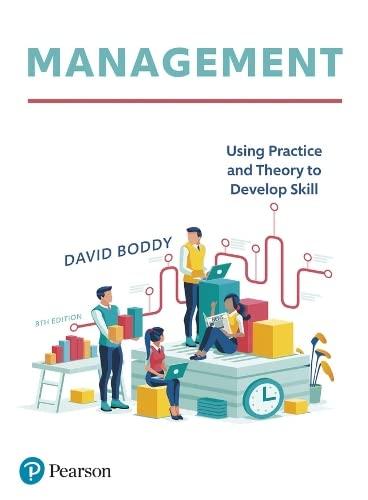Question
_____is a desire for definite knowledge, rather than ambiguity or confusion. Select one: a. None of the above is correct. b. Bayes theorem c. Calibration
- _____is a desire for definite knowledge, rather than ambiguity or confusion.
Select one:
a.
None of the above is correct.
b.
Bayes theorem
c.
Calibration theory
d.
Need for cognition
e.
Judgment convergence
- Advising managers to be sensitive to new information and to revise prior judgments in light of new information reduces the effects of which of the following heuristics?
Select one:
a.
Confirmation bias
b.
Availability heuristic
c.
Representativeness heuristic
d.
Simulation heuristic
e.
Anchoring-and-adjustment heuristic
- Focusing on _____ leads decision makers to act _____.
Select one:
a.
benefits; risk seeking
b.
costs; risk averse
c.
None of the above is correct.
d.
benefits; risk averse
e.
losses; risk averse
- People sometimes _____ base rate information because it is a statistic.
Select one:
a.
ignore
b.
over estimate
c.
misuse
d.
emphasize
e.
over use
- Taking books home over a holiday expecting to do lots of work and doing nothing at all is an example of:
Select one:
a.
the planning fallacy
b.
confidence
c.
unfreezing
d.
redundancy
e.
neglecting base rates
- The case of the U.S. automobile industry maintaining the status quo while the Japanese developed innovative new solutions to old problems is an example of:
Select one:
a.
poor decision frame management
b.
openness to new frames
c.
abandoning an operations research perspective
d.
high need for cognitive closure
e.
relying too heavily on Bayes Theorem
- The decision aid involving the construction of a key list of inputs for a decision, importance weights for each input, and objective ratings of each input for each decision alternative is known as:
Select one:
a.
a subjective linear model
b.
an actuarial model
c.
an objective linear model
d.
None of the above are correct.
e.
Both a and b are correct.
Step by Step Solution
There are 3 Steps involved in it
Step: 1

Get Instant Access to Expert-Tailored Solutions
See step-by-step solutions with expert insights and AI powered tools for academic success
Step: 2

Step: 3

Ace Your Homework with AI
Get the answers you need in no time with our AI-driven, step-by-step assistance
Get Started


